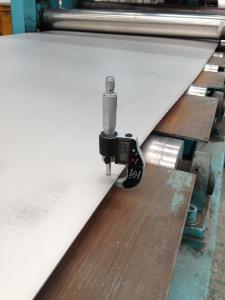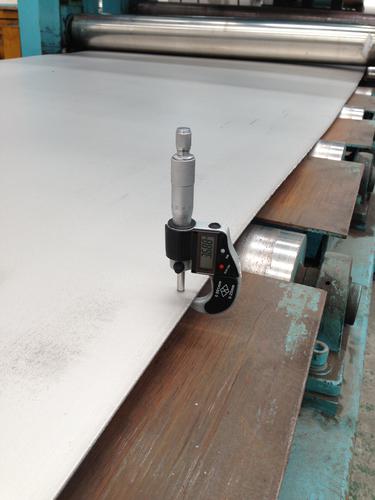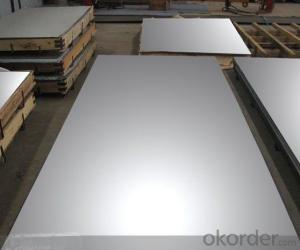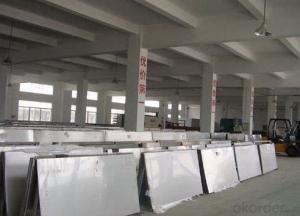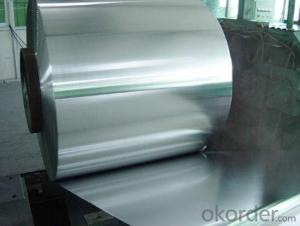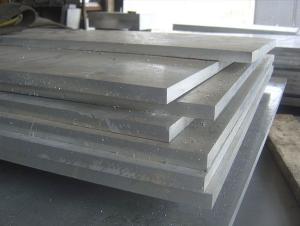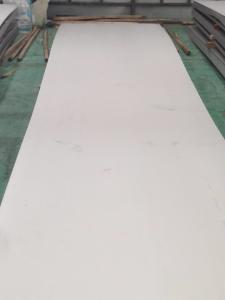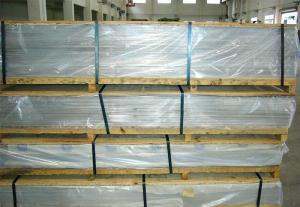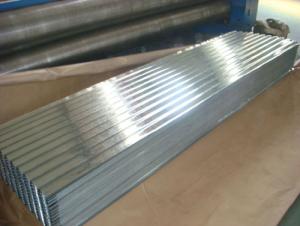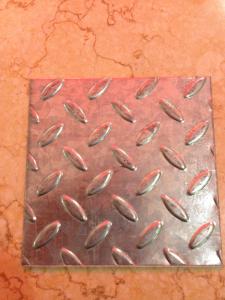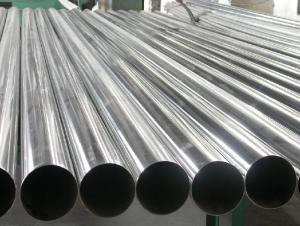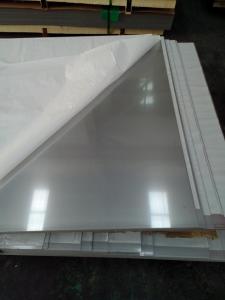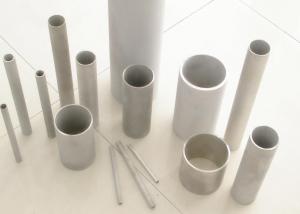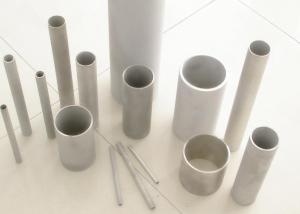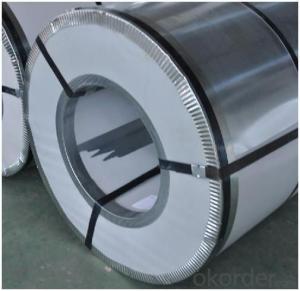Stainless Steel Sheet With Best Price With Different Grades
- Loading Port:
- Tianjin
- Payment Terms:
- TT or LC
- Min Order Qty:
- 2 m.t.
- Supply Capability:
- 5000 m.t./month
OKorder Service Pledge
OKorder Financial Service
You Might Also Like
1.Structure of Product Description
There are many different grades, such as: 200 series, 300 series, 400 series, 900series, etc. The detailed grade are as follows: 201, 202, 301, 304, 316, 410, 420, 430, etc.
The surface is including 2B, BA, Mirror Finish, Checkered, etc.
2. Main features of the product
a. Competitive price
b. Frist-Class Service.
c. Shortest service.
3. Image.
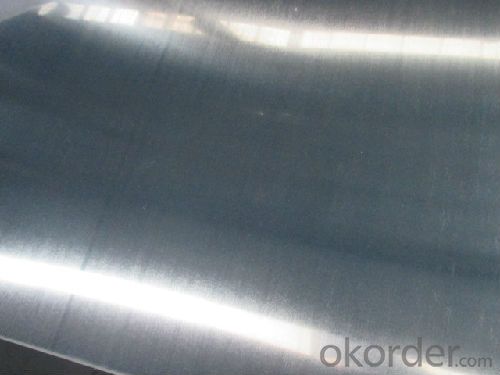
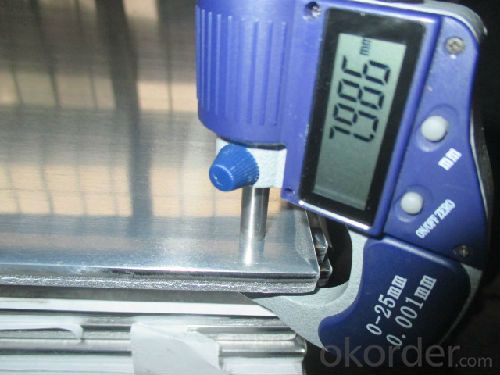
4. Product detailed sizes:
1000mm*2000mm, 1219mm*2438mm,1220mm*2440mm, 1250mm*2500mm,1500mm*3000mm, etc.
5. FAQ:
What is the quality standard?
---Usually our standard is GB3880-2006 or else.
---Normally it is around 3 tons/each size.
How many tons did you export in one year?
---Normally it is around 9000 tons totally.
Where is your client from?
---Normally it is from Japan, USA, ENGLISH, SINGAPORE, ETC.
What is your mainly products?
---Normally they are stainless steel sheet, stainless steel coil, stainless steel checkered sheet, stainless steel mirror finished sheet, color coated stainless steel sheet, etc.
- Q: Can stainless steel sheets be used for kitchen utensils?
- Yes, stainless steel sheets can be used for kitchen utensils. Stainless steel is a common material used for kitchen utensils due to its durability, resistance to corrosion, and ease of cleaning. It is also non-reactive with food, making it a safe choice for food preparation and cooking.
- Q: Can stainless steel sheets be used for mezzanine flooring?
- Yes, stainless steel sheets can be used for mezzanine flooring. Stainless steel is a durable and corrosion-resistant material, making it suitable for various applications including flooring. It has high strength and can withstand heavy loads, making it ideal for mezzanine structures. Additionally, stainless steel sheets can be easily cleaned and maintained, ensuring a hygienic and aesthetically pleasing flooring option.
- Q: What are the different types of stainless steel sheet surface textures for decorative purposes?
- There are several types of stainless steel sheet surface textures that are commonly used for decorative purposes. These textures can enhance the overall aesthetic appeal of the stainless steel sheet and make it suitable for various applications. Some of the different types of stainless steel sheet surface textures include: 1. Brushed Finish: This texture is achieved by rubbing the stainless steel sheet surface with a fine abrasive material, resulting in a uniform satin-like appearance. Brushed finish is popular for its smooth and subtle texture, making it suitable for various decorative applications. 2. Mirror Finish: Also known as a highly reflective finish, the mirror finish is achieved by polishing the stainless steel sheet surface to a high gloss. This texture creates a mirror-like reflection and is often used in decorative applications where a sleek and modern appearance is desired. 3. Bead Blast Finish: This texture is created by blasting the stainless steel sheet surface with small glass beads, resulting in a matte and textured appearance. Bead blast finish is commonly used in decorative applications where a non-reflective and textured surface is desired. 4. Embossed Finish: This texture involves creating patterns or designs on the stainless steel sheet surface by stamping or pressing it with a patterned roller or plate. Embossed finishes can vary in pattern and depth, adding a visually appealing and tactile element to the stainless steel sheet. 5. Etched Finish: This texture is achieved by chemically etching the stainless steel sheet surface with an acid or other corrosive substances. Etched finishes can create various designs, patterns, or even images on the surface, making it ideal for decorative applications where intricate detailing is required. 6. Hairline Finish: This texture is created by mechanically polishing the stainless steel sheet surface with fine abrasive belts or brushes, resulting in a narrow and uniform textured pattern. Hairline finishes are commonly used in decorative applications where a subtle and elegant appearance is desired. These are just a few examples of the different types of stainless steel sheet surface textures available for decorative purposes. Each texture offers a unique visual and tactile quality, allowing for a wide range of design options when using stainless steel sheets for decorative applications.
- Q: What are the benefits of using perforated stainless steel sheets in ventilation systems?
- There are several benefits of using perforated stainless steel sheets in ventilation systems. Firstly, perforated stainless steel sheets provide excellent airflow and ventilation. The small holes or perforations in the sheets allow for the free flow of air while still maintaining structural integrity. This helps to ensure efficient and effective ventilation in a space. Additionally, perforated stainless steel sheets are highly durable and resistant to corrosion. Stainless steel is known for its strength and longevity, making it an ideal material for use in ventilation systems. The perforations in the sheets do not compromise their structural integrity, allowing them to withstand harsh environmental conditions and maintain their functionality for a long time. Furthermore, perforated stainless steel sheets offer aesthetic appeal. The perforations can be designed in various patterns and shapes, providing a visually appealing look to the ventilation system. This can be particularly beneficial in commercial or industrial settings where the ventilation system is exposed and visible. Moreover, perforated stainless steel sheets are easy to clean and maintain. The smooth surface of the stainless steel makes it easy to wipe away dust, dirt, and other contaminants, ensuring a high level of cleanliness in the ventilation system. This is crucial for maintaining good air quality and preventing the buildup of pollutants. Lastly, perforated stainless steel sheets can also serve as a form of security or protection. The small holes in the sheets can prevent the entry of unwanted objects, such as insects or debris, into the ventilation system. This helps to maintain the integrity and functionality of the system while ensuring the safety and well-being of the occupants. In summary, using perforated stainless steel sheets in ventilation systems offers numerous benefits, including excellent airflow, durability, corrosion resistance, aesthetic appeal, ease of maintenance, and added security. These advantages make perforated stainless steel sheets a popular choice for ventilation systems in various applications.
- Q: Are stainless steel sheets suitable for chemical processing plants?
- Chemical processing plants find stainless steel sheets highly suitable. The reason lies in the excellent corrosion resistance that stainless steel offers, making it the ideal choice for environments with chemicals. It can resist a wide range of chemicals, including acids, alkalis, and solvents, which are commonly present in chemical processing plants. Moreover, stainless steel sheets provide high strength and durability, enabling them to endure harsh operating conditions and maintain their structural integrity over time. They are also easy to clean and maintain, ensuring a hygienic environment in chemical processing plants. Furthermore, stainless steel sheets possess favorable thermal properties, making them appropriate for applications involving extreme temperatures. Additionally, they have low magnetic permeability, which proves advantageous in certain chemical processing operations. All in all, stainless steel sheets are a favored option in chemical processing plants due to their corrosion resistance, strength, durability, and ease of maintenance.
- Q: How do I prevent corrosion under insulation on stainless steel sheets?
- To prevent corrosion under insulation on stainless steel sheets, it is essential to ensure proper installation and maintenance. Firstly, use high-quality insulation materials that are resistant to moisture and have a vapor barrier to prevent any water penetration. Secondly, ensure that the stainless steel sheets are installed correctly, with no gaps or exposed areas that could allow moisture accumulation. Regular inspections and maintenance, including repairing damaged insulation or sealing any gaps, are crucial to prevent moisture ingress. Additionally, applying a suitable corrosion inhibitor on the stainless steel surface can provide an extra layer of protection.
- Q: What are the bending limits of stainless steel sheets?
- The bending limits of stainless steel sheets are contingent upon several factors, including the stainless steel grade, sheet thickness, and the specific bending process employed. Stainless steel sheets are renowned for their exceptional strength and durability, enabling them to be bent to a certain degree without fracturing or breaking. As a general rule, stainless steel sheets can be bent to a radius that is at least twice the thickness of the sheet. For instance, a 1mm thick sheet can typically be bent to a minimum radius of 2mm. It is crucial to note, however, that this is merely a general guideline, and the actual bending limits may differ based on the particular stainless steel grade. Certain stainless steel grades, such as 304 and 316, possess higher yield strengths and greater resistance to deformation, rendering them suitable for more demanding bending applications. Thicker sheets also exhibit higher bending limits in comparison to thinner ones, as they possess more material to withstand the forces of bending. Moreover, it is important to mention that the chosen bending process can impact the bending limits of stainless steel sheets. Press brake bending and roll bending are commonly employed methods for bending stainless steel sheets. These processes employ distinct techniques and equipment, resulting in varying bending limits. To ascertain the exact bending limits for a specific stainless steel sheet grade and thickness, it is advisable to refer to the manufacturer's specifications or seek guidance from a professional metal fabricator. They possess the expertise and knowledge to provide precise information and guidance on the bending capabilities of stainless steel sheets tailored to your specific application.
- Q: Can stainless steel plate spray paint?
- Topcoat. Because it is in the open, one hand paint with good weather resistance, on the other hand, it is very difficult to use paint, most of the prison film so that polyurethane paint is a two-component paint curing agent, without baking, the room temperature with the curing agent can be cured thoroughly. As the old brand is very good.
- Q: What is the maximum thickness available for stainless steel sheets?
- The maximum thickness available for stainless steel sheets can vary depending on the specific grade and type of stainless steel, but it generally ranges from 0.5 to 6 millimeters (mm) or even thicker for certain applications.
- Q: How can stainless steel sheets be cleaned and maintained?
- Stainless steel sheets boast exceptional durability and corrosion resistance, making them a favored option for various purposes. To uphold their appearance and functionality, it is crucial to engage in regular cleaning and proper maintenance. Outlined below are the necessary steps for cleaning and maintaining stainless steel sheets: 1. Begin by eliminating loose dirt or debris from the surface using a gentle cloth or brush. This precautionary measure prevents any potential scratching during the cleaning process. 2. Prepare a cleaning solution by combining warm water with a mild detergent or dish soap. Steer clear of abrasive cleaners or products containing chlorine, bleach, or ammonia, as they can harm the stainless steel surface. 3. Immerse a soft cloth or sponge into the cleaning solution and delicately scrub the stainless steel sheet in the direction of the grain. Refrain from applying excessive pressure to avoid scratching. 4. Thoroughly rinse the sheet with clean water to eliminate any residue from the cleaning solution. Ensure that all soap or detergent is completely washed away. 5. Employ a soft, lint-free cloth to dry the stainless steel sheet. It is important to dry it meticulously to prevent the formation of water spots or streaks. 6. For particularly stubborn stains or fingerprints, employ a stainless steel cleaner or specialized stainless steel wipes. Adhere to the instructions provided by the manufacturer for optimal results. These cleaners aid in restoring the luster and removing tough stains or marks. 7. To prevent scratches, avoid using abrasive materials like steel wool or rough brushes when cleaning stainless steel sheets. Instead, opt for soft cloths or non-abrasive sponges. 8. Routinely inspect the stainless steel sheets for any indications of corrosion or damage. If rust spots or pitting are detected, employ a stainless steel cleaner or passivation solution to restore the surface. Seek professional guidance if the damage is extensive. 9. To sustain the appearance of the stainless steel sheet, it is advisable to regularly wipe the surface with a soft cloth or microfiber towel to eliminate dust, fingerprints, or other blemishes. By adhering to these cleaning and maintenance measures, stainless steel sheets can retain their original shine, resist corrosion, and remain in excellent condition for an extended period of time.
Send your message to us
Stainless Steel Sheet With Best Price With Different Grades
- Loading Port:
- Tianjin
- Payment Terms:
- TT or LC
- Min Order Qty:
- 2 m.t.
- Supply Capability:
- 5000 m.t./month
OKorder Service Pledge
OKorder Financial Service
Similar products
Hot products
Hot Searches
Related keywords
